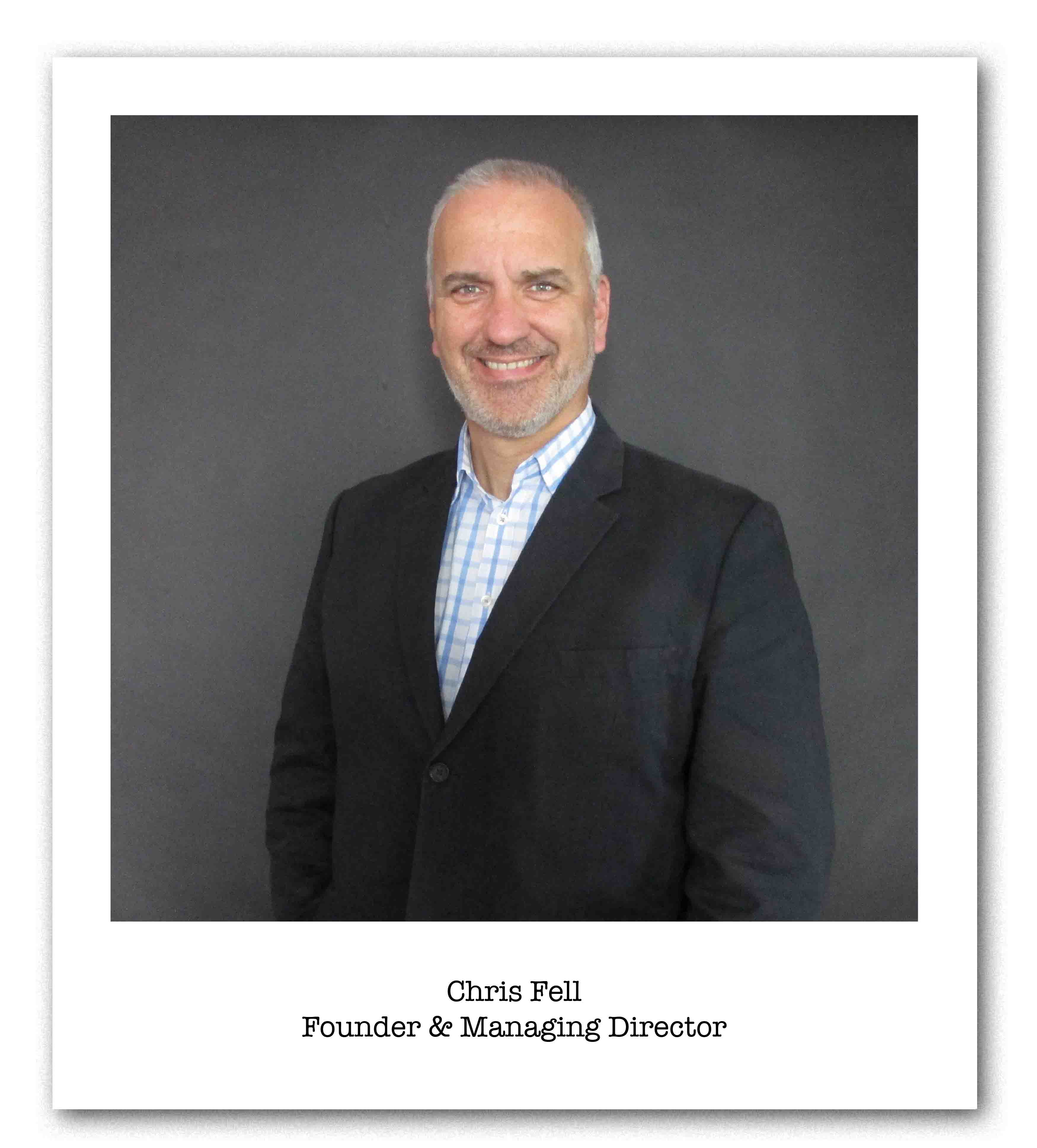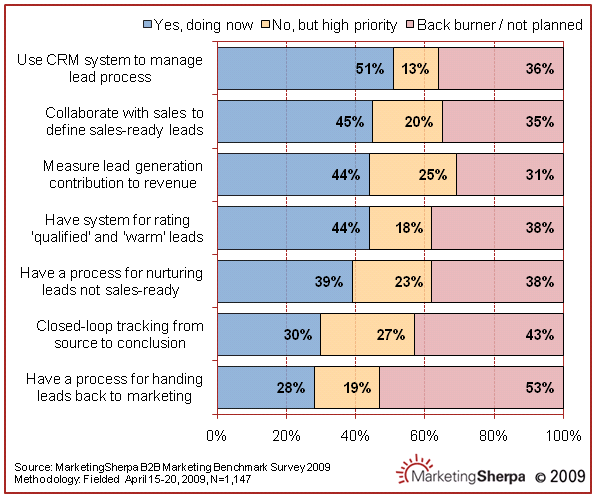Get WISER with Your AI Prompts - A guide for sales managers
Everyone’s wittering on about AI like it’s the second coming. But here’s the rub: if you give it half-baked prompts, you’ll get half-baked answers....
4 min read
 Chris Fell
10/09/2010 6:25:00 AM
Chris Fell
10/09/2010 6:25:00 AM

Marketing Sherpa have just released some interesting data from their B2B Benchmark survey.
It gives an excellent snapshot of where your competitors are currently spending their marketing dollars and where they plan to spend their dollars. A couple of points stand out to me.
Firstly the top 3 "No, but high priority" category are all about measurement and process. Marketers are being asked to prove the value of their programs and increasingly to turn marketing from "art" to "science". Whilst the immediate catalyst of this change may be born from the seeds of the financial crisis, there is no way back, marketing has changed for good. The advent of new technologies particularly cloud based services delivered over the web has revolutionised marketing. Are you able measure and track your marketing spend, if not, get onto it quickly, before your CFO comes knocking.
Secondly, and to me perhaps most shockingly is the data for "Have a process for handing leads back to marketing". For 72% of marketers to not have a formal process for doing this is insane, for 53% of them to have no plans to put a process in place is downright frightening. Recycling leaked prospects, hugely reduces your lead generation costs, increases your funnel velocity and funnel efficiency.

Hugh MacFarlane from MathMarketing, wrote about this recently on their blog. He explains the vital importance of including recycling tactics in your marketing campaigns. He said:
"In sales and marketing, we celebrate winners - the salesperson who returns with the signed contract is a hero, as is the marketer who exceeds their quota of qualified leads. Even the customer gets a look in: We send them a letter of congratulations from the President of the company. Yet the celebrations usually cover the 5 per cent success and avoid confronting the fact that the other 95 per cent no longer in our sales funnel can actually be counted as failure.
"Why do we spend so much time on the 5 per cent of buyers and so little time on the 95 per cent who leaked from the funnel?
"We need to push past the initial surge of euphoria that accompanies success and get down to the truth about the business of marketing to businesses. Some of the realities include:
"Let's look at some tactics that work well to catch the leaked prospects.
"Plugging the early leaks, cheaply. Because the prospective buyer has little relationship with you, as demonstrated by their lack of response, your tactics need to have:
"A buyer who has disengaged early in their journey has no real commitment to any ongoing communication from you - so anything that asks them to jump through hoops is not appropriate. This means you shouldn't send them emails that require them to click through to receive your white paper, or letters or surveys that require them to complete a form. The buyers' responsiveness at this stage in the process is likely to be sluggish. It will take a while to bring them back on board. Reconcile yourself to the possibility that you might execute a tactic 50 times and receive no response, then find them firmly back in the funnel after your 51st approach. This means that you need to choose a tactic that you can execute 50 times and not look foolish.
"Conversely, you need to "allow" your buyer to progress if they are ready. Make your invitation subtle, but don't let it get lost. Whatever you do, keep the momentum going. If you lose momentum, you will have to start from scratch all over again. So start your recycling as soon as you can after they have leaked, and maintain the rhythm. You should touch your buyers at least every two months, but you can communicate as frequently as weekly in some markets. But you need to take care that your tactics are welcomed and not resented. If you are sending emails, make sure they are loaded with true value - not just promotions and "product flog" that holds more interest for you than for them.
"What sort of communications work?
"Tactics for late leakers"
"You can use higher-involvement and higher-cost tacts on buyers who have leaked later in their journey. This is because they have had a longer relationship with you and are engaged, though at what level you do not know. As a first step, make sure to gain agreement from the buyer to your recycling tactic. They will rarely decline. For example, as you withdraw from the opportunity, you might say something like this:
"While we regret that we've been unable to help you on this occasion, we respect your decision to delay the project for six months. We need to keep out of your hair for a while, but we obviously want to keep in touch and be ready to help you should the need arise."
"Here's what we propose: I'll ask a colleague to give you a call once every four weeks. Each time he calls, he'll ask you just two questions: 'is August still the best time for us to re-engage - and may I send you another case study on the subject to help your background thinking."
"Would that be OK with you?"
"While it makes sense to try to prevent leakage, it is also smart to recognise when a stalled buyer is a leaked buyer. When the pipes are blocked or your funnel is not flowing, poke a few holes in it and let the stalled buyers leak freely. Free up your sales force to focus on those buyers that are most ready to progress.
So folks, if you don't have an explicit recycling tactic in your marketing campaign, consider introducing one as a matter of urgency. If you do, share your experiences for what has worked and what hasn't!
Subscribe to our latest news and updates on HubSpot.

Everyone’s wittering on about AI like it’s the second coming. But here’s the rub: if you give it half-baked prompts, you’ll get half-baked answers....

The business world is falling head over heels for AI—and who can blame it? With promises to reduce grunt work, uncover insights, and turbocharge...

Search is evolving - fast. For two decades, SEO has revolved around Google’s algorithm: keywords, backlinks, metadata, and page speed. But with the...